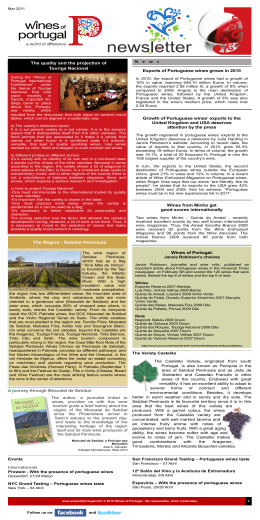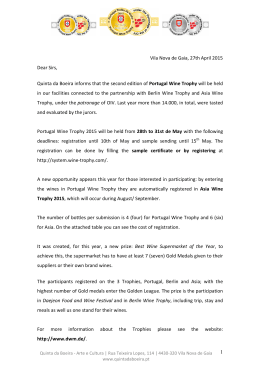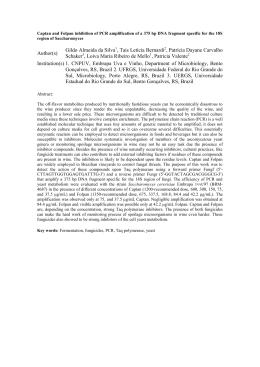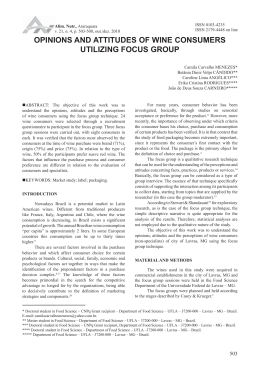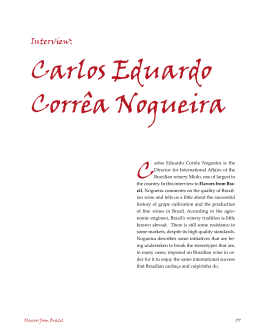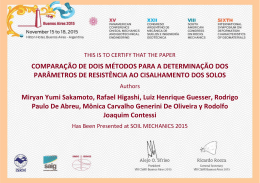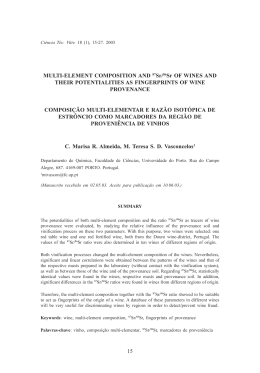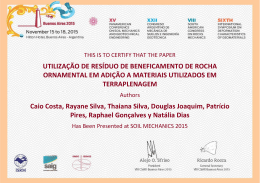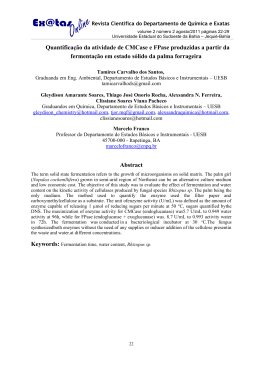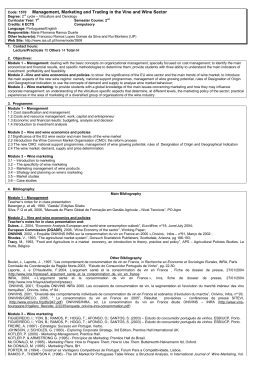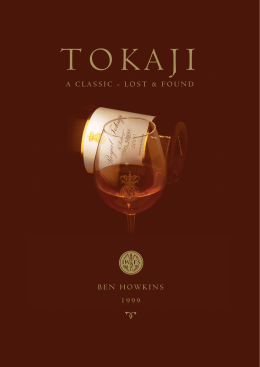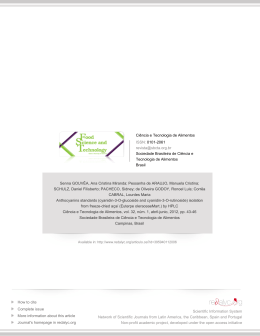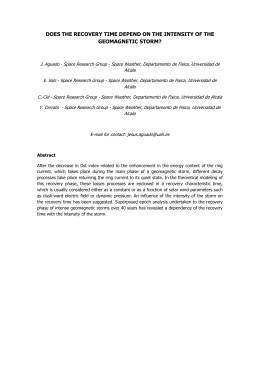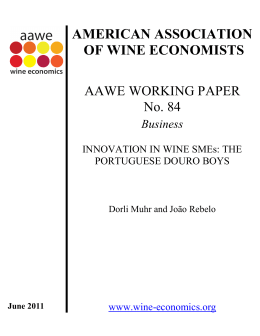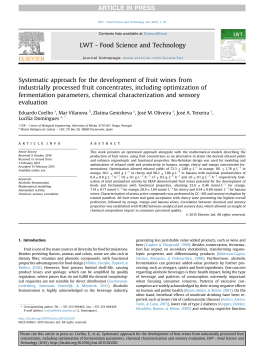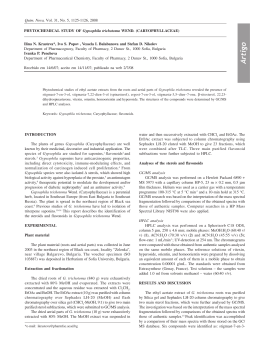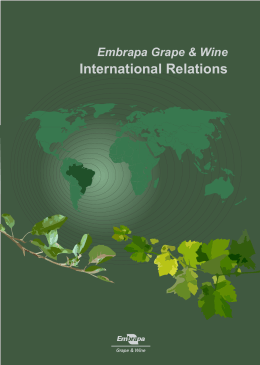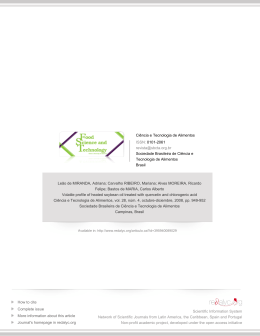FLAVONOIDS PROFILE OF RED WINES FROM SÃO JOAQUIM – SC 1,3 4 2,3 4 Eliana F. Gris , Fulvio Mattivi , Eduardo A. Ferreira , Urska Vrhovsek , Rozangela C. 2 1 Pedrosa , Marilde T. Bordignon-Luiz 1 Universidade Federal de Santa Catarina, Departamento de Ciência e Tecnologia de Alimentos CAL; 2 Departamento de Bioquímica, BQA;, Rod. Admar Gonzaga, 1346, Itacorubi, Florianópolis, SC, Brasil. 3 4 Universidade de Brasília, Faculdade Ceilândia, QNN 14, Ceilândia, Brasília, DF, Brasil. Edmund Mach Foundation, IASMA Research and Innovation Centre, Food Quality and Nutrition Department, Via E Mach 1, 38010 San Michele all’Adige, TN, Italy. In this study, Vitis vinifera L wines cv. Cabernet Franc, Merlot, Sangiovese and Syrah, 2006 and 2007 vintages, produced in São Joaquim, a wine-producing region in southern Brazil, were evaluated. As phenolic compounds, specially flavonoids compound, are one of the most important parameters in assessing the quality of wines and possible responsible for beneficial properties of wines, in this study, the levels of the main anthocyanins (delphinidin-3-glucoside, cyanidin-3glucoside, petunidin-3-glucoside, peonidin-3-glucoside, malvidin-3-glucoside and their respective derivatives -esters of acetic and p-coumaric acids) and flavonols (myricetin, quercetin, laricitrin, kaempferol, isorhamnetin and syringetin), (HPLC-DAD and HPLC-DAD-MS analysis) are studied; morever, the influence of vintage and variety on these contents also are reported. The results revels the main flavonols in these wine samples were quercetin and myricetin and the concentration of total −1 flavonols in the wine samples ranged from 20.81 to 46.79 mg L . The mean total anthocyanins −1 −1 content was 47.43 mg L , and ranged from 12.94 to 125.60 mg L . Two-way ANOVA analysis revealed that the total content of flavonols and anthocyanins were influenced by both factors: variety and vintage (p< 0.05). The results for the phenolic compounds content of the wine samples were considered appropriate for quality red wines, and, in general, theses concentrations were in line with those reported in the literature from the most renowned regions of premium wine production. These interesting results further support the potential of the region to produce high quality wines.
Download
